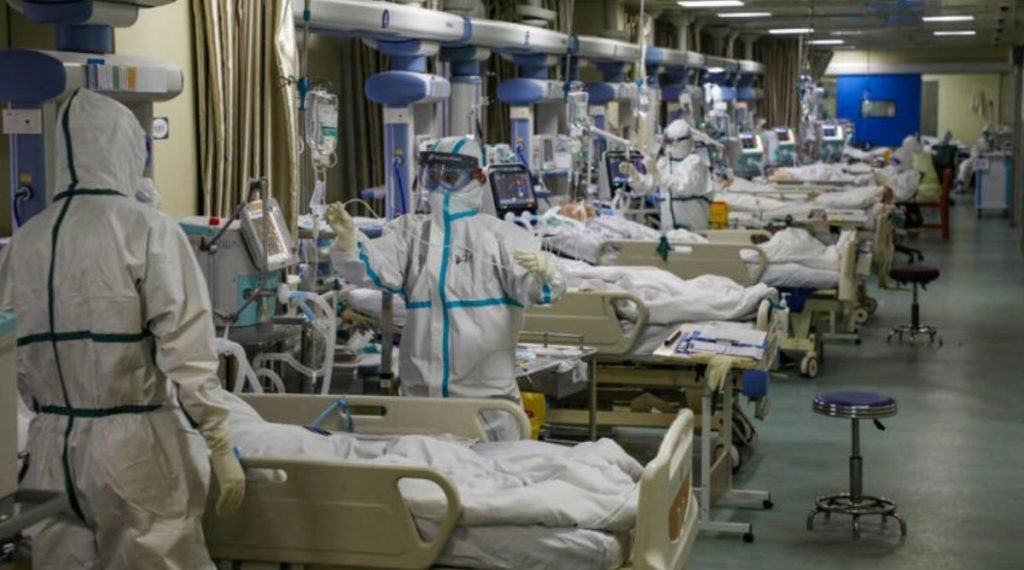Fresh Surge in COVID-19 Cases Across India
India is once again witnessing an uptick in COVID-19 cases after a prolonged period of low transmission. The fresh surge, while relatively modest in comparison to previous waves, is setting off alarms in several states. Health officials and state governments are ramping up surveillance and public awareness as isolated clusters begin to emerge in urban regions.
Karnataka, one of the worst-hit states in earlier waves, reported 40 new COVID-19 infections on Wednesday, reigniting concerns among public health authorities.
Karnataka Reports New Spike: What We Know
According to the latest bulletin from Karnataka’s Health Department, the 40 newly confirmed cases have pushed the state’s active caseload to 126. Bengaluru, the tech capital of India, continues to report the majority of infections, accounting for over 60% of current active cases.
In a concerning development, one fatality has also been reported. The individual had tested positive for COVID-19 and succumbed while undergoing treatment in a government hospital. Contact tracing efforts have been launched to contain further spread.
Health officials emphasize the importance of immediate testing for those exhibiting symptoms such as fever, sore throat, cough, or fatigue, particularly in metro areas.
Read Also: Surge in Covid Cases Across Maharashtra, Karnataka, Tamil Nadu: Variant NB.1.8.1 Under Watch
New Variants Under Surveillance
Experts believe the current uptick could be linked to mutations in circulating variants, though genomic sequencing is ongoing. The Indian Council of Medical Research (ICMR) and the National Centre for Disease Control (NCDC) have flagged a couple of sub-lineages of Omicron, which may be responsible for localized surges.
While these variants have not demonstrated a significantly higher mortality rate, their transmissibility and immune evasion properties remain under close watch.
Dr. Aruna Mishra, a senior virologist at the All India Institute of Medical Sciences (AIIMS), noted,
“We’re not seeing exponential spikes like in 2021, but the patterns show regional clusters emerging again, particularly in southern states.”
Government Response: Vigilance and Preparedness
The Union Health Secretary, Punya Salila Srivastava, held a high-level virtual meeting earlier this week with state health officials from Kerala, Maharashtra, Tamil Nadu, and Karnataka, where rising numbers have been recorded.
States have been directed to:
- Maintain buffer stock of oxygen and critical care beds
- Ensure availability of RT-PCR and rapid testing kits
- Promote booster dose campaigns, especially among vulnerable groups
- Reopen COVID war rooms for emergency coordination
In Delhi, the state government has issued a health advisory and asked all hospitals to review their pandemic preparedness measures, including checking oxygen lines, ventilators, and ICU capacities.
Read Also: COVID-19 Surge in India, Singapore, and Hong Kong: Health Ministries on High Alert
India’s COVID Snapshot (As of May 30, 2025)
| State | New Cases | Active Cases | Deaths Reported |
| Karnataka | 40 | 126 | 1 |
| Maharashtra | 28 | 98 | 0 |
| Tamil Nadu | 19 | 74 | 0 |
| Delhi | 12 | 41 | 0 |
| Kerala | 36 | 112 | 0 |
Public Health Recommendations
With rising numbers, public health officials are urging citizens not to panic but to remain cautious and responsible. Some key recommendations include:
- Masking in crowded or enclosed places
- Frequent handwashing and sanitizer use
- Avoiding large indoor gatherings
- Getting tested if symptoms develop
- Vaccination, including booster doses
Dr. Rohit Saxena, a public health expert from NIMHANS, advises:
“People must treat symptoms seriously. We’re seeing cases where individuals delay testing, leading to silent spread within families or offices.
Vaccination Campaign to Resume in Urban Pockets
While India’s initial vaccine rollout was one of the largest globally, booster dose uptake remains below expectations. The Ministry of Health is launching a micro-targeted campaign in cities like Bengaluru, Mumbai, and Chennai to improve coverage, especially among the elderly and those with comorbidities.
Mobile vaccination vans, workplace camps, and evening immunization drives are being planned in high-density areas.
Schools, Workplaces Urged to Monitor Symptoms
Authorities have also directed schools and offices to:
- Monitor symptoms among students and staff
- Report clusters of absenteeism
- Encourage remote work where feasible
- Avoid unnecessary physical meetings
There are no immediate plans to impose restrictions, but containment zones may be reinstated in areas with more than 5 active cases in a housing block or institution.
Citizens Speak: From Complacency to Caution
The renewed rise in cases has sparked mixed reactions from the public. While many continue life as normal, others are returning to COVID-era habits.
Lakshmi V., a Bengaluru resident, says,
“I had almost stopped carrying a mask. But with news of rising cases again, I’ve begun using it in the Metro and office lifts.”
Ritesh Shah, a tech worker in Pune, adds:“We just want clear communication. If boosters help, let’s push them. But panic and misinformation are what really hurt.”
Bottom Line: Stay Alert, Not Alarmed
While the numbers are far from the devastating peaks of earlier years, the recent rise in infections is a timely reminder that the virus still lingers. Public health authorities continue to monitor the situation closely, and citizens are encouraged to take personal precautions seriously.
As India heads into the monsoon season—a time when viral infections often spike—maintaining hygiene, following protocols, and seeking early treatment remain the best defense.
📢 For more updates on COVID-19 in India, stay tuned to Prime Feeds] or visit the Ministry of Health and Family Welfare.
